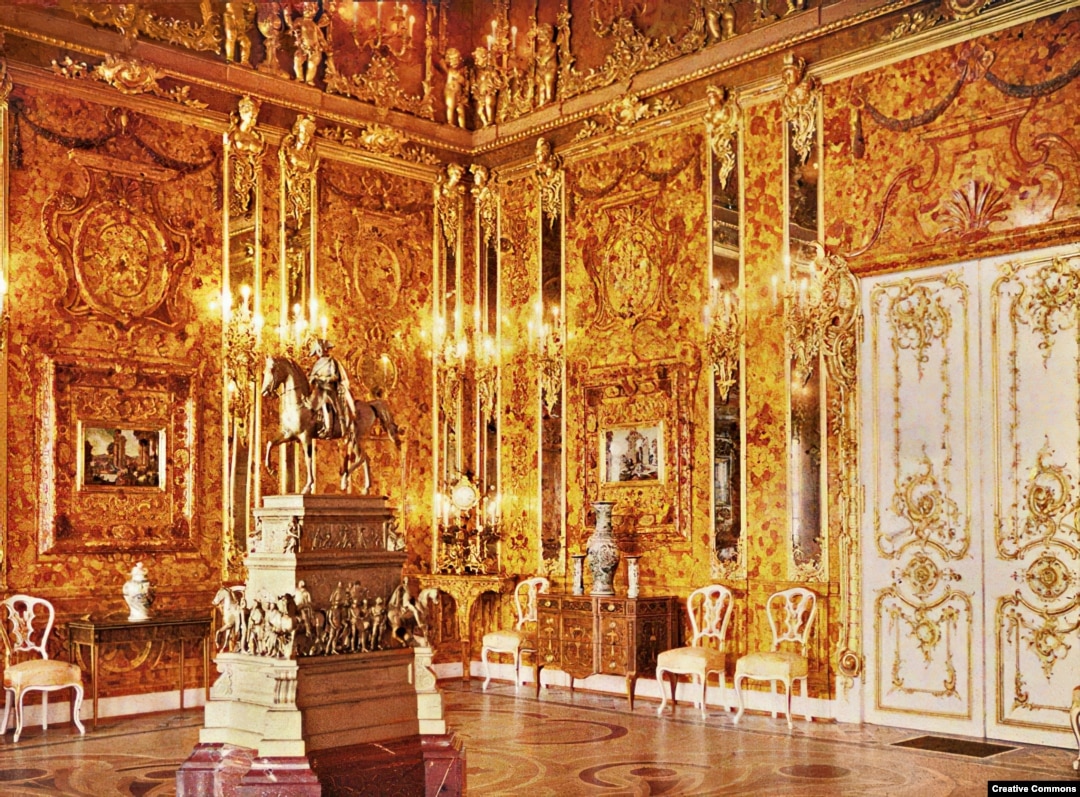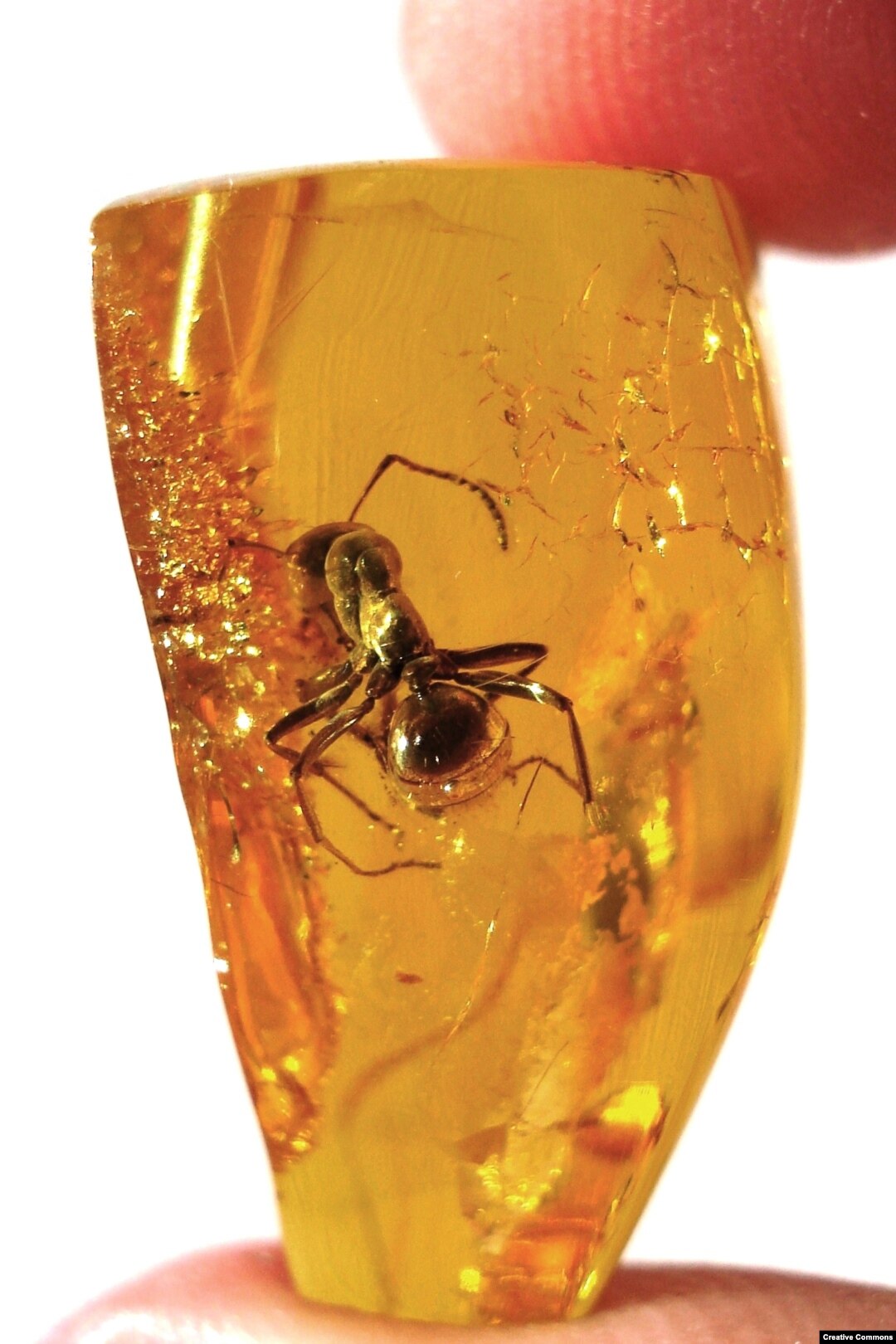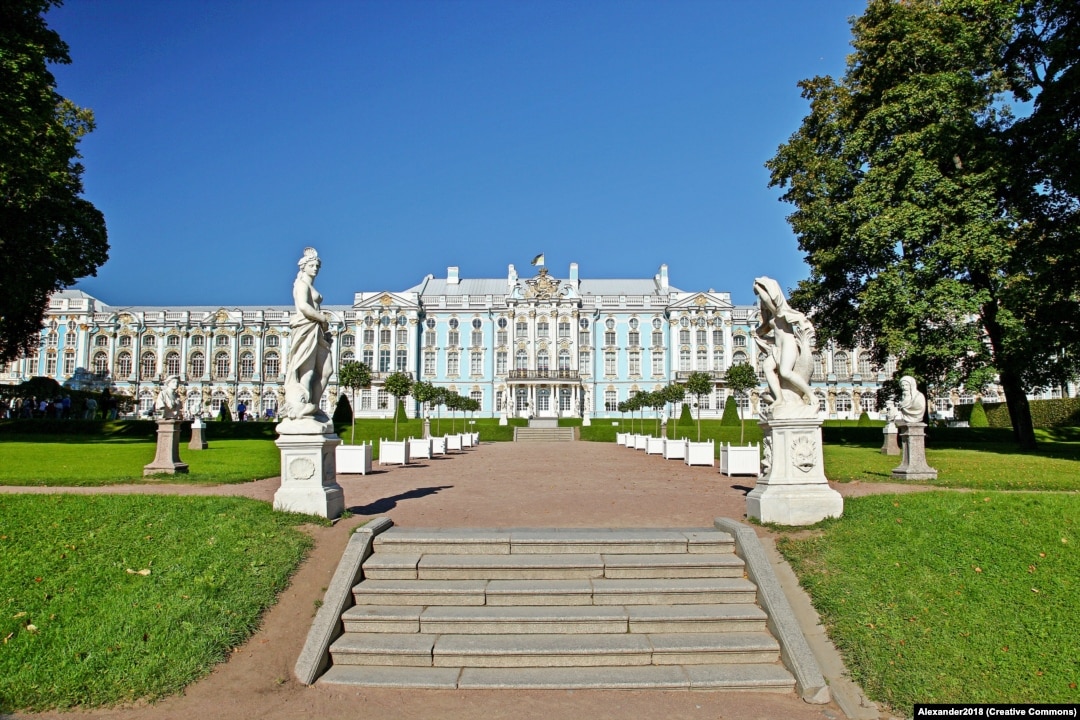What Happened To Russia's Amber Room?

Russia's Amber Room, photographed in 1917. The dazzling space was paneled with tons of finely carved amber, gold, and jewels. The room was presented as a gift to Peter the Great by Prussia in 1716 and dubbed by some an "eighth wonder of the world."

Amber is fossilized tree sap that has hardened to gem-like chunks through tens of millions of years underground. It has been highly valued since prehistory for its translucent, caramel beauty.

The Amber Room was inside the Catherine Palace, a former royal residence near St. Petersburg, until 1941.
During the German invasion of the Soviet Union (pictured), curators at the Catherine Palace tried to dismantle and safeguard the Amber Room amid the Nazi onslaught. But after several fragile amber panels crumbled in the gloves of the workers, the decision was made to hide the treasure behind hurriedly constructed false walls.
The attempt to hide the Russian treasure was swiftly uncovered by looting Nazis, who carried it to Koenigsberg in today's Kaliningrad -- then a German region -- to be kept in the town's castle (pictured).
Soon the tables of the war turned and the Soviet military advanced into Nazi-held territory. During the Red Army's drive into Koenigsberg, backed by massive Allied air support, much of the city was destroyed.
Koenigsberg after the war
Many experts who researched the fate of the Amber Room believe the priceless panels were destroyed in the firestorm that gutted much of the city, but a rumor persisted that fleeing Germans took the Amber Room's paneling with them aboard a steamship.
Boats escape the Red Army's advance, on the Baltic Sea in early 1945. A steamer called the Karlsruhe was one of 158 boats sunk during the massive sea-borne evacuation. The vessel was carrying 1,058 people and a large cargo when it sank.
On September 30, a group of Polish divers announced they had found the wreckage of the Karlsruhe off the Polish coast.
A photo taken inside the boat, which was reportedly sunk by Soviet warplanes. The Polish divers released a statement saying the ship was "practically intact. In its holds we discovered military vehicles, porcelain, and many crates with contents still unknown."
A photo from inside the Karlsruhe. The contents of the ship's cargo is expected to be revealed in the coming days.
After the disappearance of the treasure during World War II, Soviet authorities commissioned a team of craftsmen, including Vyacheslav Kurakin (pictured), to reconstruct the Amber Room within the Catherine Palace.
A craftsman uses a historic photo for reference during the reconstruction. Work to replicate the Amber Room took 24 years.
The reconstructed Amber Room as it appears today. One of the divers involved in the discovery of the sunken German vessel claimed it "may provide groundbreaking information on the disappearance of the legendary Amber Chamber."
Previous treasure hunters have raised hope of uncovering the remains of the Amber Room that turned out to be false leads.

